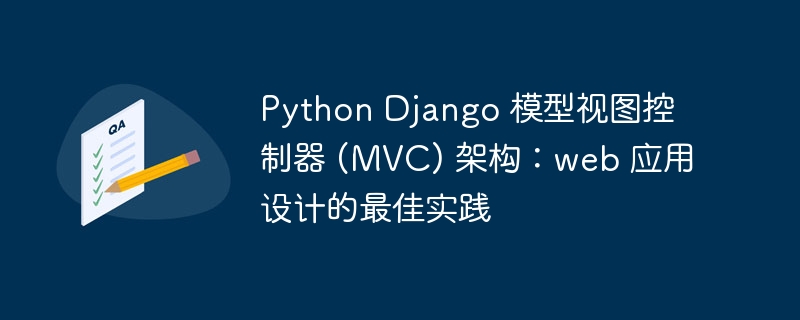

Model
view
Controller
Other Best Practices
Advantage
mvc Architecture provides many advantages, including:
in conclusion
By following the best practices of python Django MVC architecture, you can design WEB applications that are robust, maintainable, and scalable. By separating the model, view, and controller layers, using the appropriate tools and techniques, and following coding conventions, you'll create high-quality applications that satisfy your users and meet your business needs.
The above is the detailed content of Python Django Model View Controller (MVC) Architecture: Best Practices for Web Application Design. For more information, please follow other related articles on the PHP Chinese website!
 What are the application scenarios of PHP singleton mode?
What are the application scenarios of PHP singleton mode?
 The difference between mac air and pro
The difference between mac air and pro
 What is an .Xauthority file?
What is an .Xauthority file?
 python number to string
python number to string
 How to share a printer between two computers
How to share a printer between two computers
 How to solve the computer prompt of insufficient memory
How to solve the computer prompt of insufficient memory
 How to fix winntbbu.dll missing
How to fix winntbbu.dll missing
 How to set up virtual memory
How to set up virtual memory




